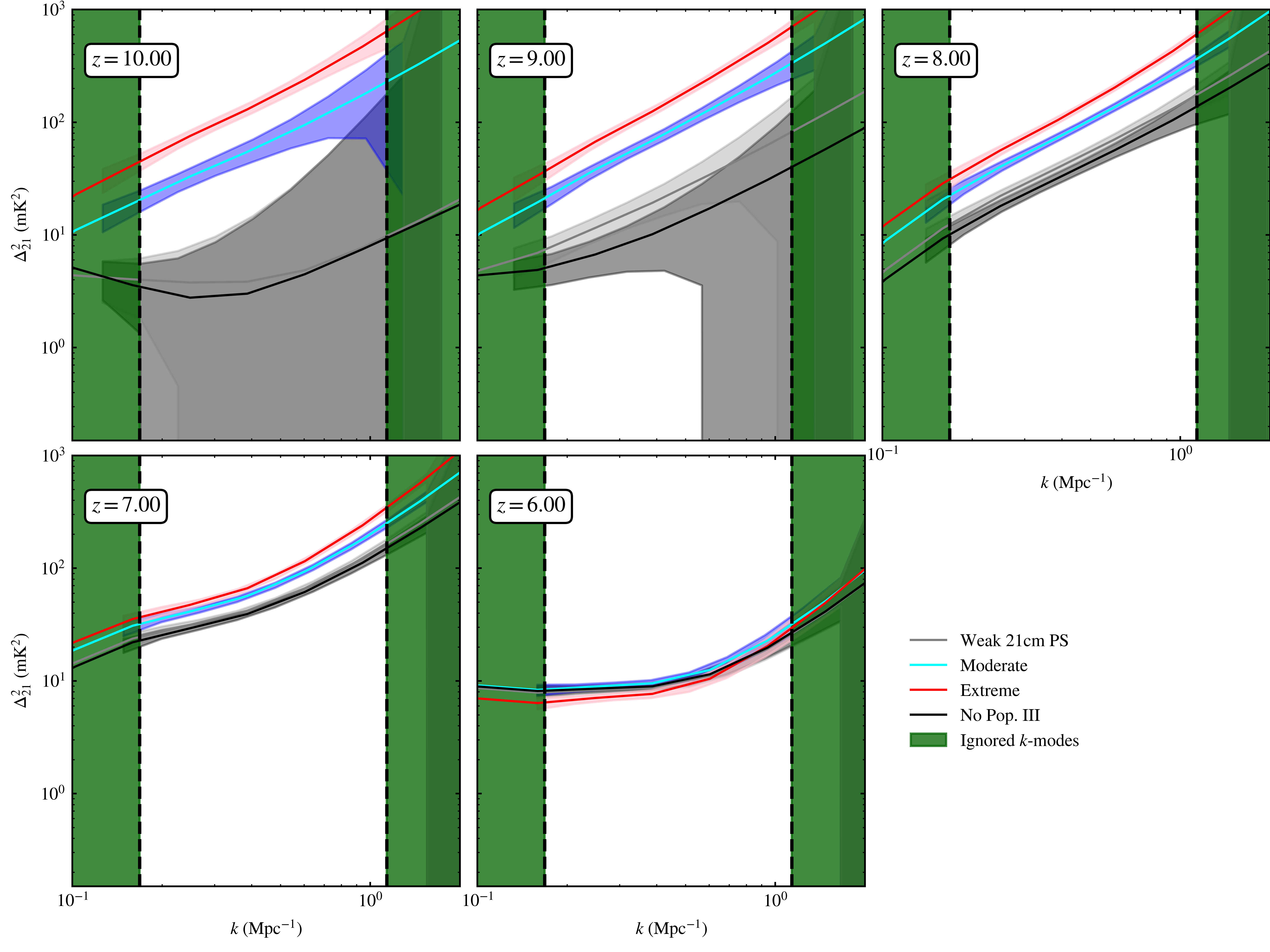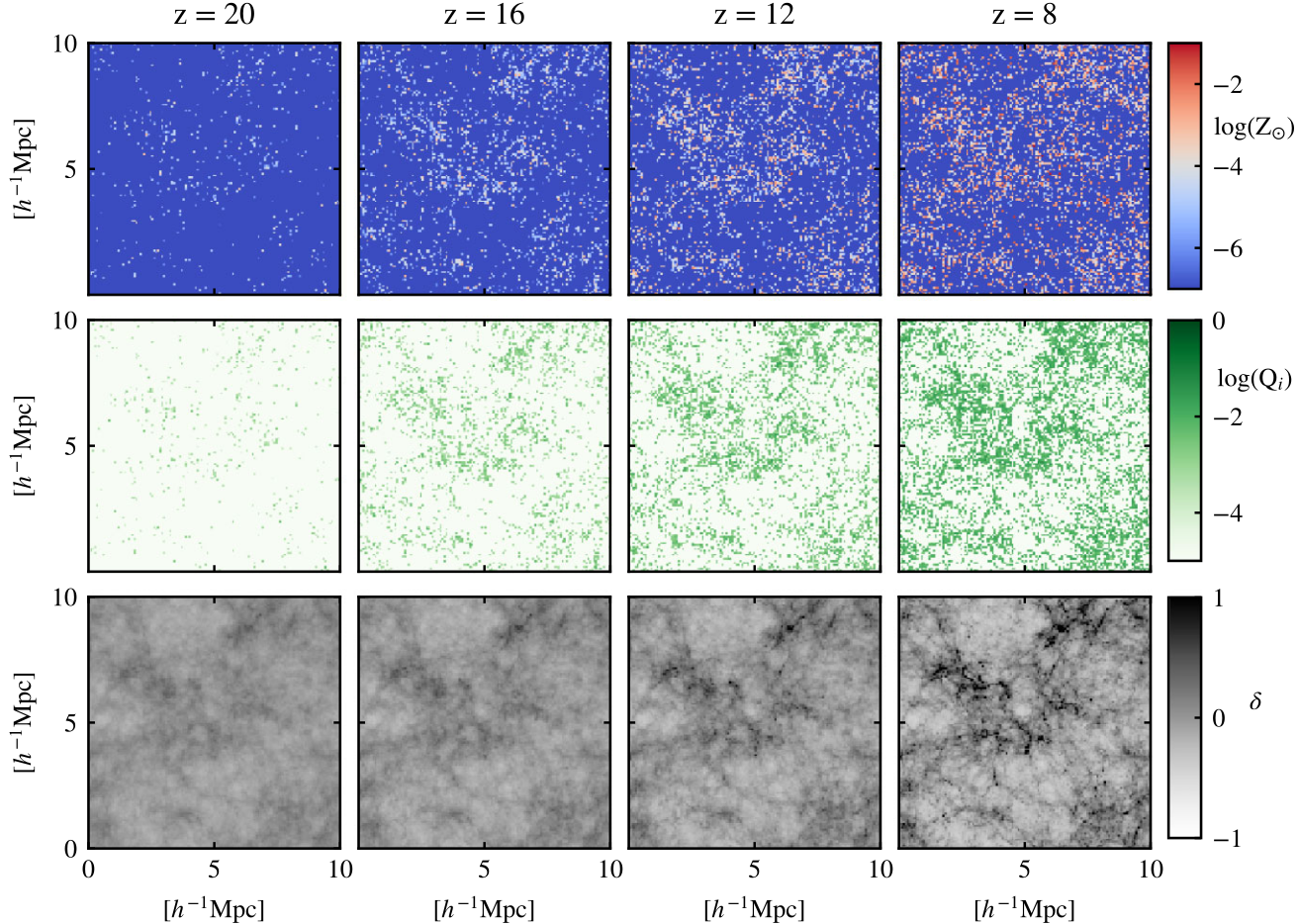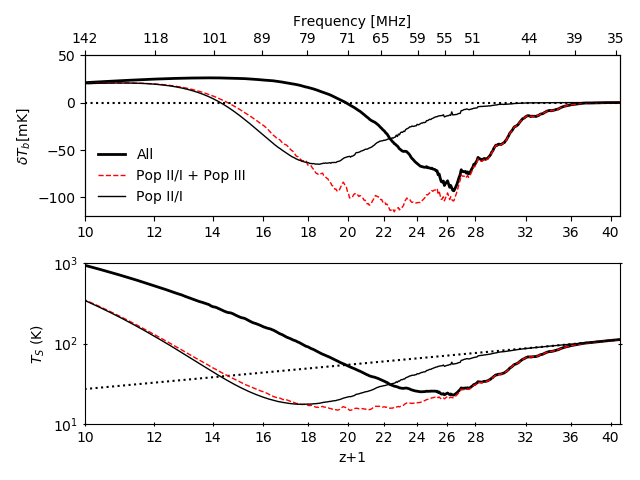My Research
My main research interests are Population III (Pop. III) stars, Epoch of Reionization, 21cm physics, Cosmological Simulations and Galaxy formation.
But what are Pop. III stars? According to the current theories, Big Bang was able to synthetise only Hydrogen, Helium and few traces of Lithium. All the other elements were produced inside stars. This means that the very first stars that formed in the Universe must have had a "pristine" chemical composition: only H and He. We call these stars: Pop. III stars. While these objects are extremely fascinating, those have never been observed so far leaving a lot of uncertainties on the properties of these very first stars. The current consensus is that Pop. III stars were probably more massive and brighter than the stars we observe in the more recent Universe. Understanding Pop. III stars is crucial to understand the evolution of our Universe, for this reason I have developed my own semi-analytical code to investigate the parameters that regulate the formation of the first stars. Click here to learn more about how implemented Pop. III star formation in Meraxes (Ventura et al. 2024).
Given their large masses, Pop. III stars emitted a lot of photons impacting on the thermal and ionized state of the Universe. In particular, their remnants might have emitted a lot of X-rays, heating up the gas between the galaxies (the intergalactic medium or IGM). Since most of the gas is neutral Hydrogen, a very useful observable to study the IGM is the 21cm signal. Click here to learn more about how Pop. III stars and the first black holes can impact the 21cm global signal (Ventura et al. 2023).
This strong heating occuring at high redshift (z > 15) leaves an imprint also on the power spectrum during the Epoch of Reionization (z = 6-10), prime target of current and upcoming radio facilities like HERA and SKA. Click here to learn more about the differences in the 21cm power spectrum at z = 7-10 when Pop. III stars significantly heat up the IGM at z > 15 (Ventura et al. subm.). We also provide estimates on the power spectrum observability with SKA, demonstrating that with a SKA observation of 1000 hours we can actually disentangle different Pop. III star formation models.


